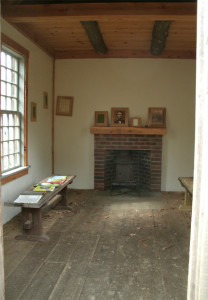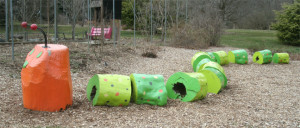By Lucille Stott
I had the pleasure recently of meeting Huey Coleman — of Films By Huey — and his wife, Judy Wentzell, in Brunswick, Maine, where Huey was screening his feature-length documentary, Henry David Thoreau: Surveyor of the Soul. Thirteen years in the making, this engrossing film celebrates Thoreau’s short but rich life in images, interviews, and music.
With the expert help of Thoreau biographer Laura Dassow Walls, who served as lead scholar consultant, Huey traces that life from Thoreau’s birth on Thoreau Farm to his death in the “Yellow House” on Main Street. Though a good portion of the film centers on Walden Pond, Huey doesn’t allow Thoreau’s legendary time there to overwhelm the fuller life story, which was more varied, nuanced, and communal than so many people realize. The Henry depicted on screen, much like the man who emerges from Walls’s groundbreaking biography, is the Thoreau that the birthplace has always sought to celebrate: the son, the friend, the citizen, the forward-thinking guide to a better future.
Throughout the film, we’re treated to interviews by more than thirty prominent scholars, writers, and activists, among them Robert Gross, Robert Richardson, Howard Zinn, Robert Bly, Bill McKibben, Ron Hoag, Beth Witherell, and Tom Blanding. But we also hear from local Thoreauvians, including Concord’s Joseph Wheeler, the first president of the Thoreau Farm Trust, who was born on Thoreau Farm, and the late, great Walter Brain, who notes that the correct way to pronounce Thoreau’s name is by placing the accent on the first syllable: THOReau. Those who have visited Thoreau Farm will recognize several shots of the interior, where both Joe Wheeler and Laura Walls were interviewed.
Like Thoreau, the film remains mainly in and near Concord but does venture outside its borders to places Henry visited, including the Maine Woods, Staten Island, and Minnesota. At one point, Huey visits the site of the Walden Project, an outdoor alternative public education program in Vergennes, Vermont, serving students in grades 10-12. As students read from well-worn copies of Walden, they show us that Thoreau, so popular among the children of his own time, can still win the affection of today’s young. In another significant segment, he interviews members of Maine’s Penobscot Nation, one of whom, Darren Ranco, is the great-great-nephew of Joe Polis, Thoreau’s guide on his third and last trip to the Maine woods.
There is also an intriguing visit with video game developer Tracy Fullerton, who has created a game that allows players to experience a virtual life at Walden Pond.
The cinematography, particularly when focused on the natural landscapes, is beautifully envisioned and edited, and the evocative music, coordinated by folk musician and composer Dillon Bustin (former executive director of Concord’s Emerson Umbrella), was taken entirely from the Thoreau family’s songbook.
To view a trailer for the film, purchase DVDs for home or classroom viewing, and find dates for future screenings, visit www.filmsbyhuey.com. It is well worth the trip.
Lucille Stott is a charter board member emerita and former president of Thoreau Farm Trust. Follow Lucille on new blog, “Touchstone.”










